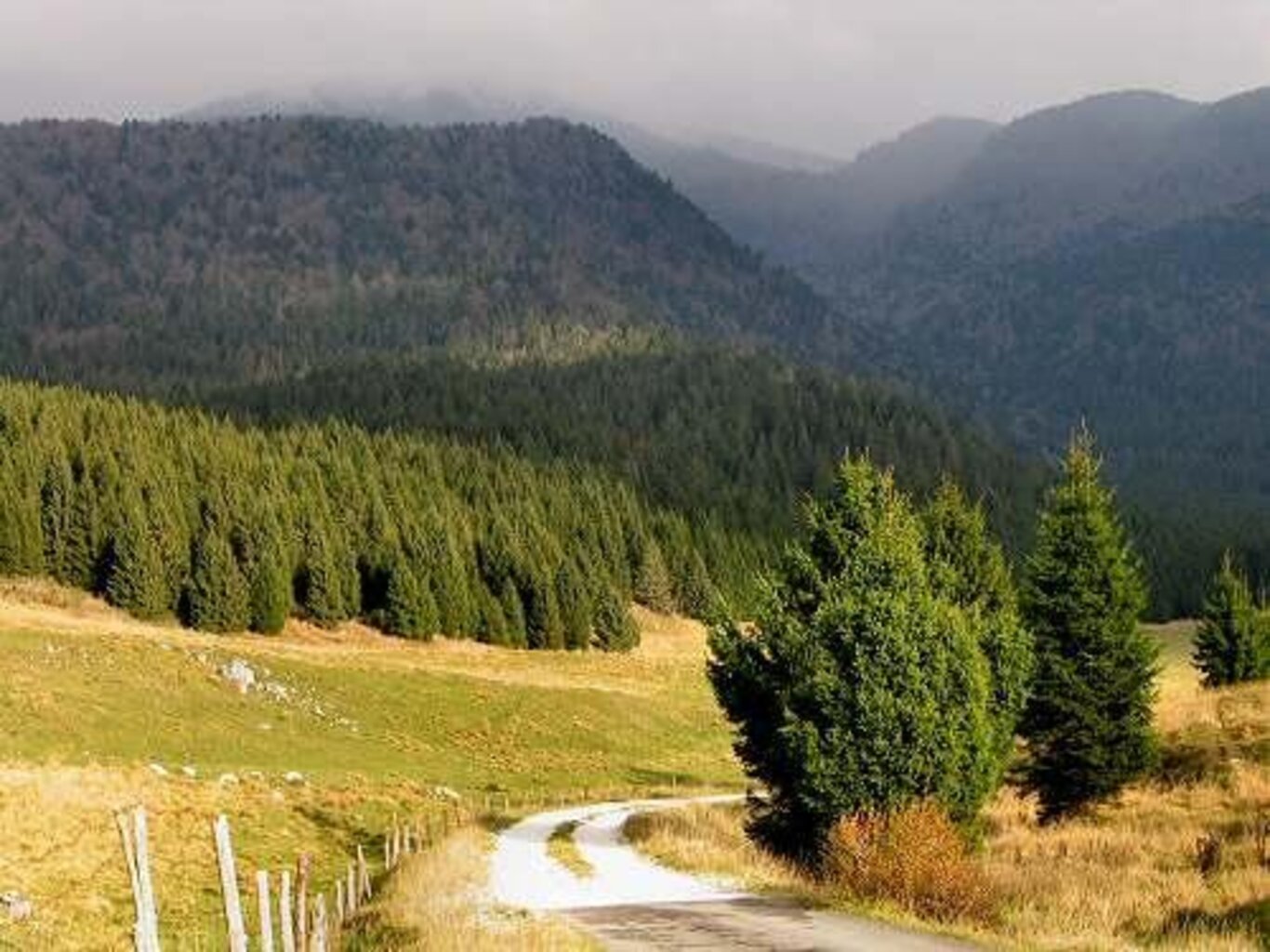The trail, which hugs the Pian di Landro-Baldassarre Reserve for a long stretch before crossing it at the end, offers hikers the chance to come into contact with different types of forest vegetation, serving as a summary of the vegetation of the entire Cansiglio Forest. The first formation encountered, near the information panel of the reserve, is the mixed forest of Norway spruce, beech, and silver fir, technically known as mountain subalpine Abietete. This type of forest has a high environmental value because it is not very widespread and represents in the pre-Alp region the only formation where the two spruces and beech coexist. However, at this point, it is not visible in its fullest expression, as it is at the edge of the road, more exposed to disturbances, especially human ones. Mountain subalpine Abietete usually spreads in more favorable environments compared to that of pure beech forests: it prefers slopes that are never steep, areas of soil and nutrient accumulation that are relatively rich in water. The three species, silver fir, Norway spruce, and beech, find here a "reciprocal agreement of coexistence" forming the so-called mixed forest. Continuing along the asphalted road, always observing towards the right within the reserve, one can notice at a certain point a distinct change in forest vegetation: the forest appears more uniform and characterized by only one species: Norway spruce. This is the result of reforestation: the trees did not settle naturally but were introduced by humans as a plantation. These interventions were carried out a few decades ago (approximately around the mid-1960s) with the aim of producing timber more quickly than natural processes. Since these are not natural (artificial) formations, their balance can only be maintained on the condition that humans perform cultivation care throughout the forest's life cycle. Such interventions, visible at various points, tend to reduce the amount of dead wood (dangerous in certain areas for fires) by decreasing the number of trees (thinning) and cutting lower, now-dry branches (brushing). Within the reserve, these interventions are carried out very carefully to avoid altering the natural evolution of these artificial formations. Going up along the white road after Pian Rosada, a younger mixed forest than the one observed at the beginning of the path can be seen; here the mixture of the three species (beech, Norway spruce, and silver fir) also occurs in groups of the same species or monospecific (especially Norway spruce and beech). At a certain point, a noticeable change in the morphology of the slope can be observed: many limestone rocks emerge, and various sinkholes and valleys alternate, highlighting the typical karst environment. These are the most favorable environments for beech, which wins the competition with the spruces, forming the typical mountain subalpine beech forest, which is present in Cansiglio with exemplary forests for Northern Italy. Once inside the reserve, one can finally observe a significant expression of the mixed forest of Norway spruce, silver fir, and beech in terms of development, growth, and species distribution; it is not difficult to encounter large trees alternating with younger plants grown from seeds scattered by adult trees (natural regeneration). All this richness that can generally be observed in the environments crossed and which is manifested in the tall-stemmed plants is also found in the diverse variety of the herbaceous layer and in the presence of fauna, from soil insects to ungulates.
The reserve trail is an itinerary of about 7.5 km that takes approximately 3 hours to traverse and crosses a part of the Pian di Landro Baldassarre Nature Reserve. Some directional arrows assist hikers along the route. The path begins shortly after the village of Campon, near which there are two parking spaces where one can leave the car. Proceeding towards Tambre, an asphalted road forks on the right, and a wooden arrow indicates the start of the path. Continue along the asphalted road, about 3 km long, and pass the sign that announces the beginning of the Pian di Landro-Baldassarre Nature Reserve; the fence running along the right side of the road constitutes the reserve's boundary. After about 30 minutes, you arrive at an equipped picnic area; take the white road that forks to the right; the path rises slowly, and after about 45 minutes, at a sign, take a path on the right that leaves the white road and enters the beech forest (it is noted that continuing on the road after about 50 m, there is a typical local construction called 'huta cimbra'). From the sign, continue for about 30 minutes in the forest until you come out at the Casera Costalta pasture, proceed along the edge of the forest, and at the height of a sign, take the path that enters the forest on the right. At a sign, the path continues to the right into the reserve. White-red-white marks (indicating Avenue 2) placed on the trees allow the hiker to follow the path more easily. It is important to stay on the proposed track by following the signage, do not go off-path to avoid getting lost and to protect the plants and animals present in the reserve. The trail then intersects the asphalt road taken at the beginning and continues to the parking area.
